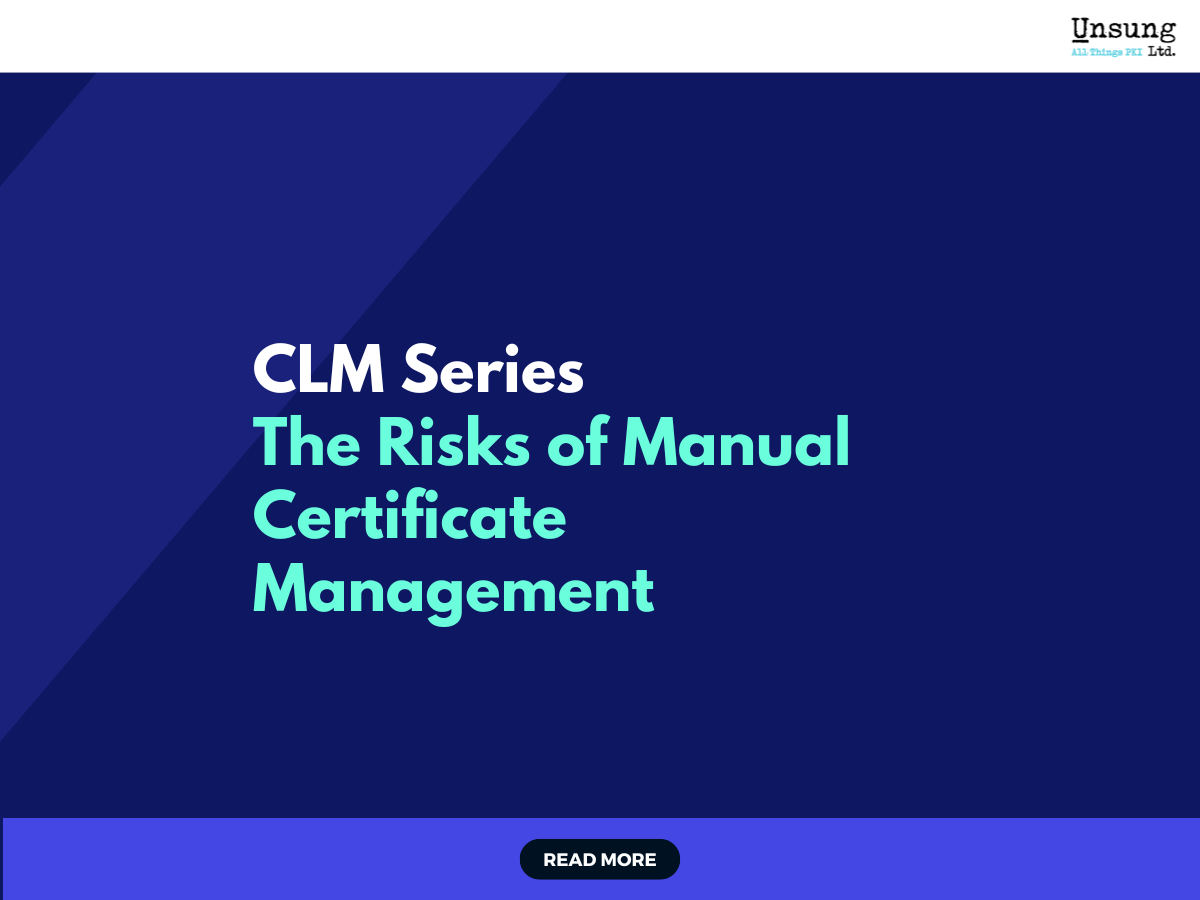Why Traditional Certificate Management Is No Longer Enough
Introduction
Digital certificates are essential for securing communications, authenticating systems, and ensuring trust between parties. Yet many organisations still manage them using manual methods such as spreadsheets or ad-hoc record keeping. As certificate usage increases, this approach quickly becomes unsustainable and risky.
The Limitations of Manual Management
Manual certificate management can lead to:
- Missed renewal dates and unexpected expirations
- Gaps in inventory, leaving certificates unmonitored
- Increased human error in issuance and deployment
- Lack of visibility into certificate ownership and compliance
These shortcomings become more pronounced as organisations adopt more cloud services, microservices, and automated workflows, each of which relies on multiple certificates.
The Cost of Failure
When a certificate expires unexpectedly, the impact can be immediate and costly. Service outages can halt business operations, damage reputation, and incur significant financial losses. Gartner estimates the average cost of IT downtime at $5,600 per minute, making certificate-related outages a serious concern.
Why Manual Methods Fall Short in Modern Environments
Today’s IT ecosystems are complex and distributed. Certificates may be issued across multiple Certificate Authorities (CAs), deployed in diverse environments, and used by numerous applications, APIs, and devices. Without a centralised view, tracking these assets accurately becomes nearly impossible. This fragmentation makes it easier for expired or compromised certificates to go unnoticed, creating security and compliance risks.
Moving Towards Automated Certificate Lifecycle Management
The solution is to replace manual processes with automated Certificate Lifecycle Management (CLM) tools. These platforms provide:
- Automated discovery of all certificates across environments
- Real-time monitoring of validity and compliance status
- Policy enforcement for consistent issuance and renewal practices
- Integration with existing security tools to detect and mitigate threats faster
By automating certificate tracking and renewal, organisations reduce human error, improve visibility, and significantly lower the risk of service outages.
Why the Problem Is Growing
Several trends are driving an exponential increase in both the number of certificates and the complexity of managing them:
- Cloud-native applications and microservices often use short-lived certificates that must be issued and renewed far more frequently than traditional server certificates.
- DevOps practices emphasise rapid deployment cycles and constant updates, leading to a constant churn of certificates across development, staging, and production environments.
- Zero-trust security models require strong authentication for every connection, meaning certificates are not limited to external endpoints but are also used extensively within internal networks.
- Regulatory requirements demand secure, auditable processes for certificate issuance and lifecycle management, with penalties for non-compliance.
These factors compound the difficulty of manual tracking. The sheer volume, combined with short validity periods and distributed deployment environments, makes it easy for certificates to be overlooked until they fail.
The Case for Automation
Certificate Lifecycle Management (CLM) solutions address these challenges by automating every stage of the process:
- Discovery to identify all certificates across on-premises, cloud, and hybrid environments
- Monitoring to track expiry dates, policy compliance, and certificate health in real time
- Renewal and replacement workflows that run automatically without human intervention
- Centralised visibility through dashboards and reporting tools that eliminate blind spots
- Policy enforcement to ensure consistent certificate strength, validity periods, and trusted issuers
- Integration with security platforms such as SIEM and EDR tools, enabling faster detection and mitigation of risks linked to certificate issues
Automation ensures certificates are managed proactively rather than reactively, reducing operational risk and avoiding the costly consequences of unexpected expirations or misconfigurations.



